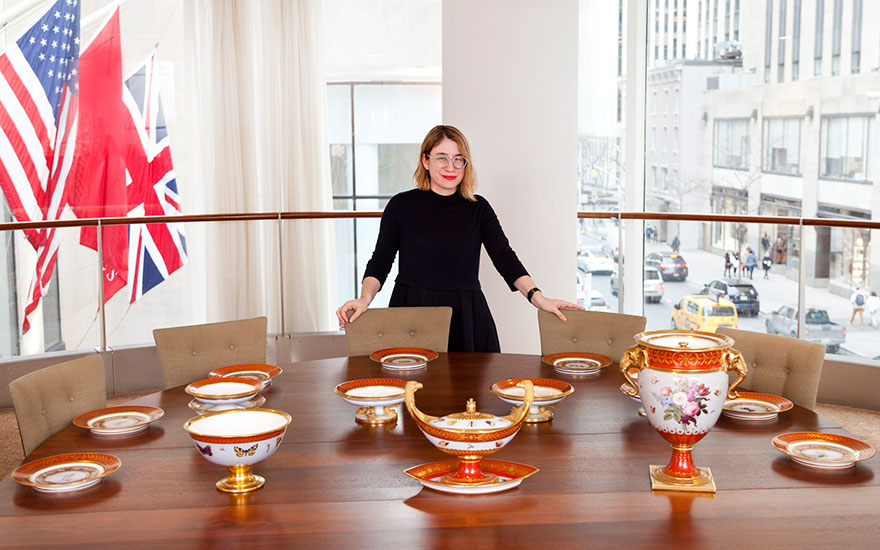From the Marly Rouge 19th Century Sevres dessert service for Napoleon I to the the 18th Century Nymphenburg porcelain trompe l’oeil dinner service from the private collection of Jayne Wrightsman; pieces of fine decorative art such as these are more than meets the eye. What may appear to be merely a beautiful service of fine porcelain, may in many cases hold a deeper story. Whether that be a comedic hand painted pattern or an interesting story behind the reason for their creation. Fine porcelain services made by Haviland Limoges for American Presidents or Sevres for French Monarchs have witnessed a great deal. These pieces of history have often been privy to world shaping conversations, and certainly do possess a story worth telling.
Today collecting fine porcelain is not simply a process of gathering rare and splendidly crafted decorative arts, but a lifestyle one creates for themselves. To explore what is an often overlooked category of collecting, we’d like to introduce you to Carleigh Queenth, Christie’s Head of Ceramics, who has carried a passion for porcelain since childhood. Growing up in a family that held a place for both collecting and creating ceramics in their hearts, it is no surprise that this talented 18th to 19th Century ceramics expert continues to inspire collectors with her passion and extensive knowledge. We hope the below Q&A will inspire you to consider exploring, touching, and investing in fine ceramic arts.
What advice would you give to someone who is just beginning their journey into the world of collecting fine ceramics and glass?
“I would tell people to buy what they love, and not to be scared of breaking items—I find the more nervous you are around objects, the more likely you are to drop or break something. Also, don’t be afraid to walk into a dealer’s shop or into an auction preview and ask lots of questions. As a specialist, I’m always happy to educate others on my area of expertise, and I know my colleagues at Christie’s feel the same.“
When it comes to porcelain services, what advice would you give collectors? What in particular should we be paying attention to?
“My advice is to use them! Stop waiting for a special occasion and live fabulously every day. If you are new to buying antique china, you should always ask for a condition report. A few chips here and there may be fine, but you want to make sure there aren’t too many cracked plates and that the items are fit for use. Also look out for restoration, which could be fine if you just want to display the pieces in a cabinet or on a wall, but potentially toxic if you plan on eating off them.“
How should we go about living with these objects that some would say are “too nice” or “to valuable” to use in everyday life?
“I would say if they are “nice” and/or valuable, you will get far more value for your money enjoying them day to day than only bringing them out for special occasions. Think of how often your grandparents or parents used their “special” china—probably not very often. They would have gotten far more joy from those objects if they enjoyed them regularly.”
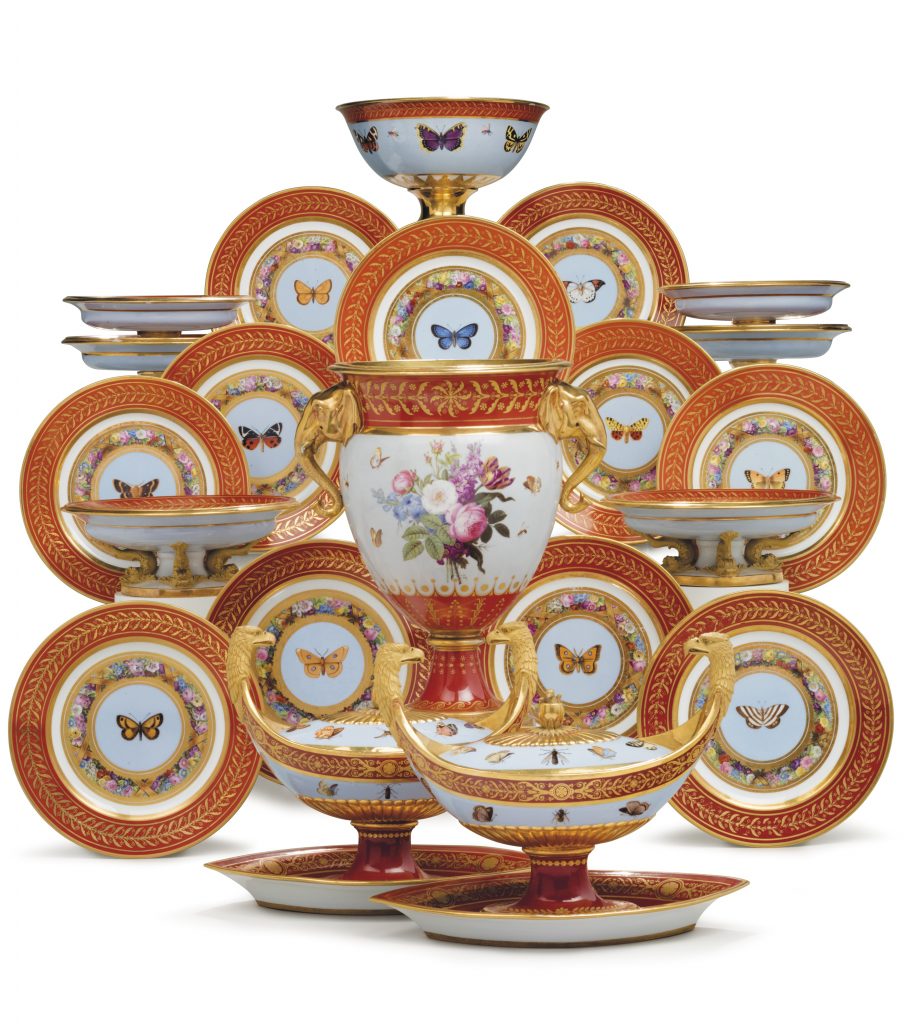
Marly Rouge 19th Century Sevres dessert service
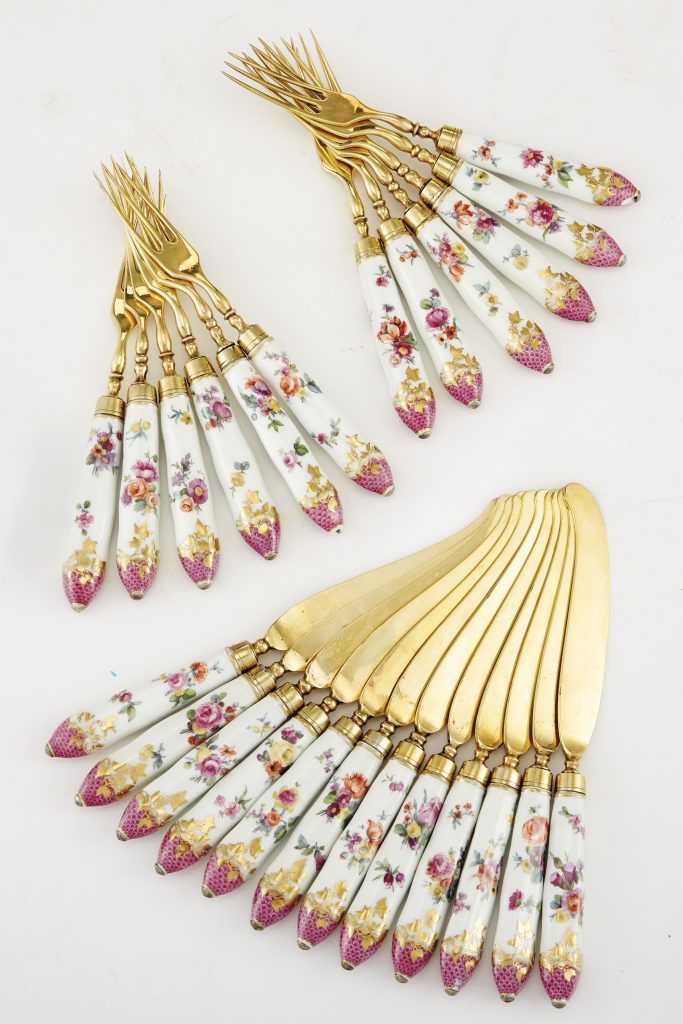
Today are you seeing more collectors looking to use and truly live with pieces or is their focus geared more towards the investment potential of these fine decorative arts?
“For a long time there seemed to be a need for collectors of 18th and 19th century furniture to create perfect period rooms in their homes, which could sometimes feel like living in a museum. The trend today is to create interiors with a mix of items from different dates and styles for a fresher look, and collectors are truly living with them. Having older pieces in your home makes a statement, and creates wonderful experiences for you and your guests– reading your favorite book in a comfy Louis XVI bergère or letting your guests drink out of 19th century glasses turn ordinary activities into something a bit more special. It’s also green/sustainable to live with pieces from auction—you get to enjoy well made pieces that have been around for hundreds of years, and will be for hundreds more, rather than something that has just been manufactured. You just need to remember to treat them gently; you are their steward, and someday someone else will have them. It is the opposite of disposable culture.“
Whether it is a dinner service from Sèvres, Royal Minton, Royal Copenhagen, or even Haviland Limoges, we often see such a wide difference in values and levels of collectability. How should we evaluate the importance of a set or pattern?
“Dinner services certainly come in a variety of price points that depend on how many pieces are in the service as well as its age, rarity, and provenance. For example, 18th century Sèvres services can be quite pricey as they have survived hundreds of years and often have detailed factory records that can give important information about who the service was originally made for, whether it be for French nobility or intended as a diplomatic gift. Newly made Royal Copenhagen services in the ‘Flora Danica’ pattern also remain quite expensive as they are, to this day, still beautifully hand painted in Denmark. Their artists look directly at the original 18th century sheets from the Flora Danica, a compendium of all the plants in Denmark, for inspiration. Most modern services, like those from Bernardaud or Haviland Limoges, can often be obtained for a fraction of their retail price at auction.“
At Christies, you’ve just completed the magnificent Jayne Wrightsman sale; with this in mind, what were some of your favorite pieces from the collection and why?
“My favorite dinner service in the Wrightsman collection was made by the Nymphenburg manufactory in Germany and dates to the late 18th century. It has fabulous trompe l’oeil decoration—each piece was painted to look like a different tattered monochrome landscape drawing nailed to a wooden board. It’s simultaneously rustic and incredibly chic. As far as individual objects go, my favorite item is probably a small Meissen snuff-box made to look like a rat seated on a cushion—there is one nearly identical to it at the Metropolitan Museum of Art.“
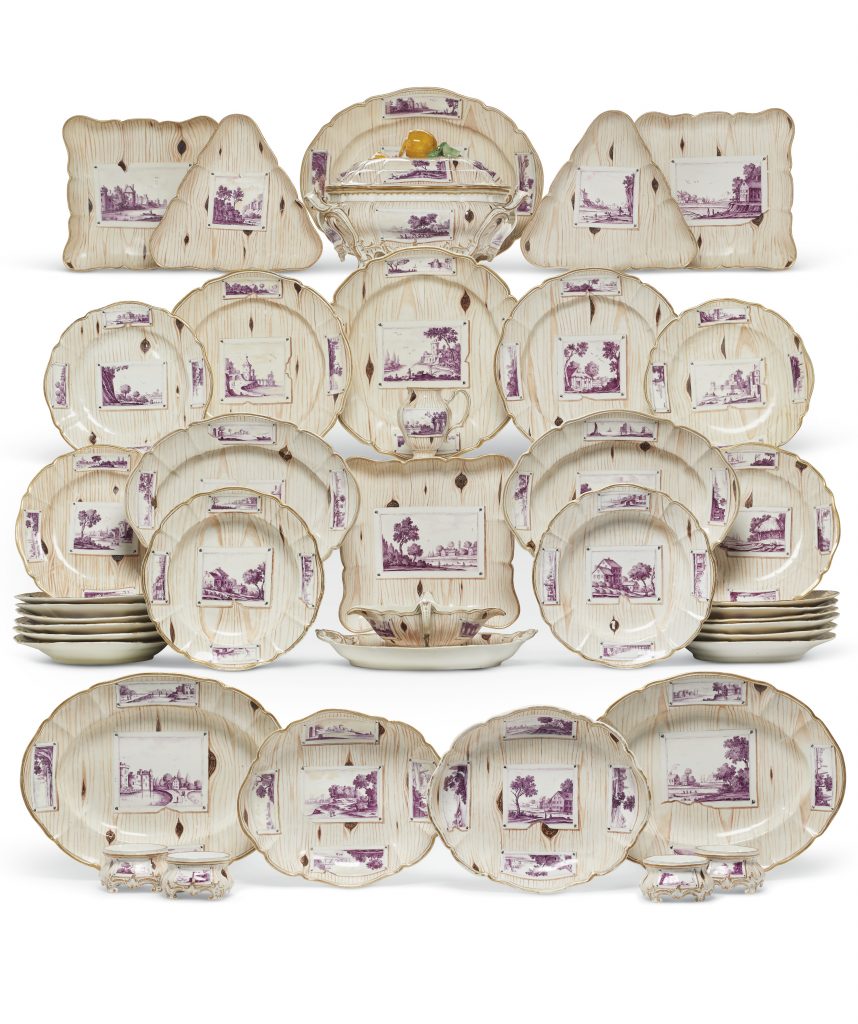
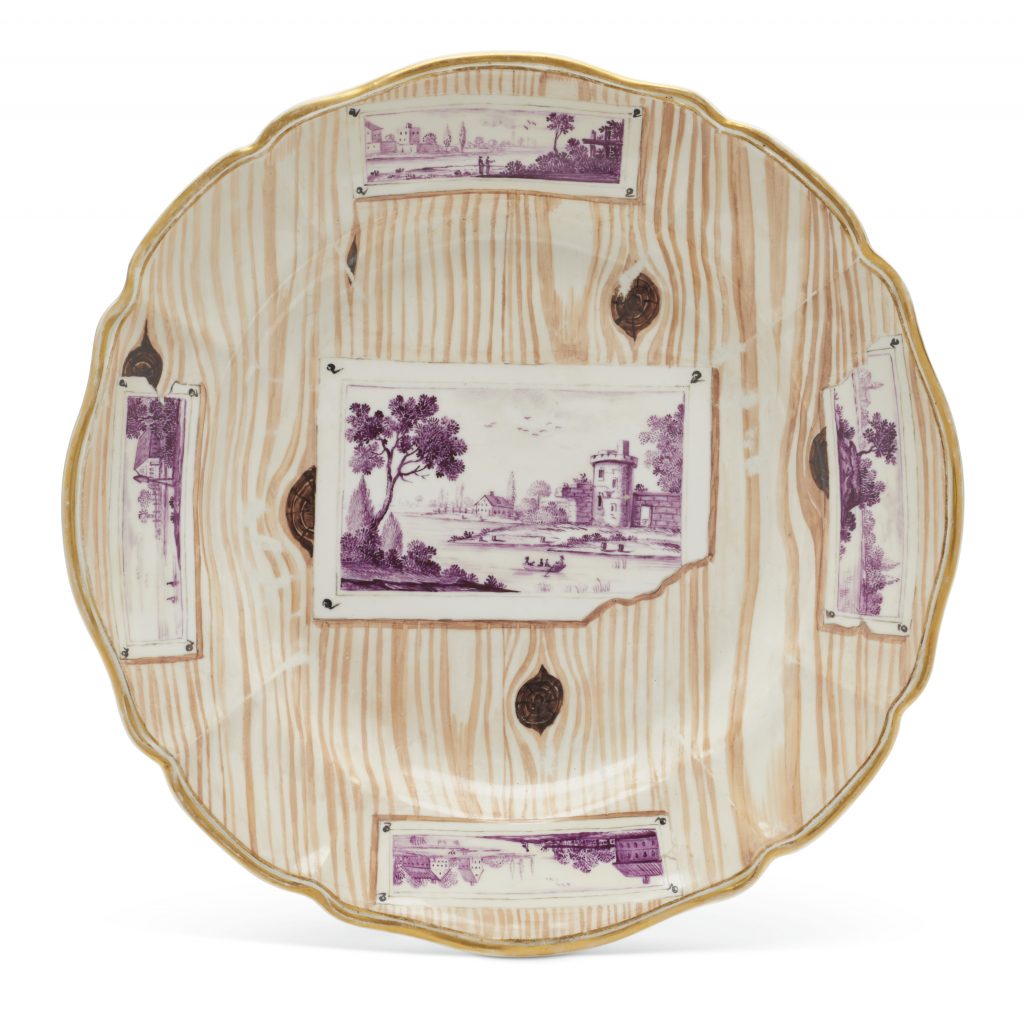
18th Century German Dinner Service with trompe l’oeil decoration
What are some pieces that are really becoming more appreciated at the moment and what are some that you are starting to see fall from popularity?
“To be quite honest, there has been a real uptick across most categories in the decorative arts since Covid began. With people spending more time at home, they are thinking about enhancing their living spaces. People are starting to shy away from minimalist tendencies now that most of their experiences are at home.“
Anything upcoming that we can look forward to seeing from you or Christies soon?
“At the end of January, we will have two auctions dedicated to the collection of Mr. & Mrs. John H. Gutfreund– they had an amazing 12,000 square foot apartment at 834 Fifth Avenue designed by Henri Samuel that overlooked the Central Park Zoo. The collection includes lots of wonderful dining wares, and the online sale will be specially dedicated to the theme of entertaining at home.“
Where can we follow you? “You can follow me on Instagram at @breakingisbad.“
Images Courtesy of: CHRISTIE’S IMAGES LTD 2020

